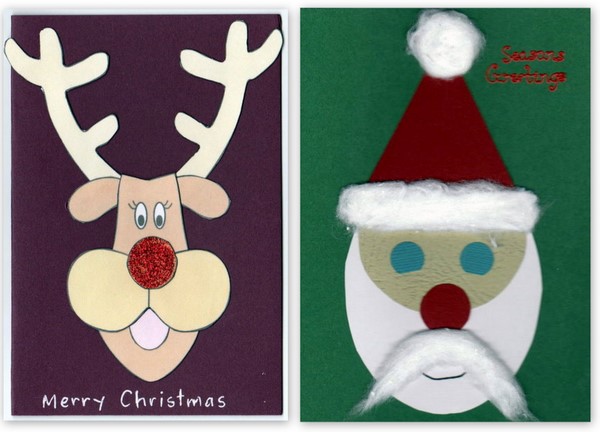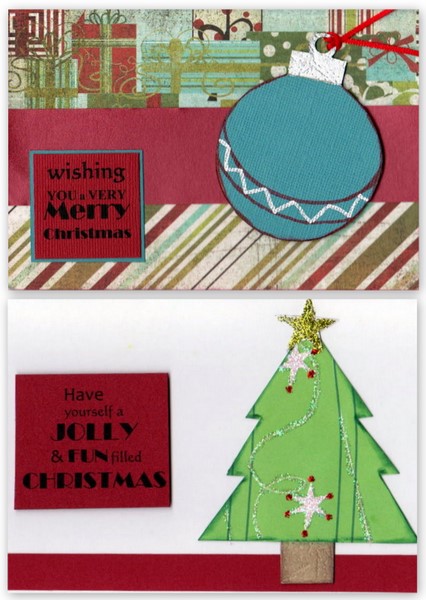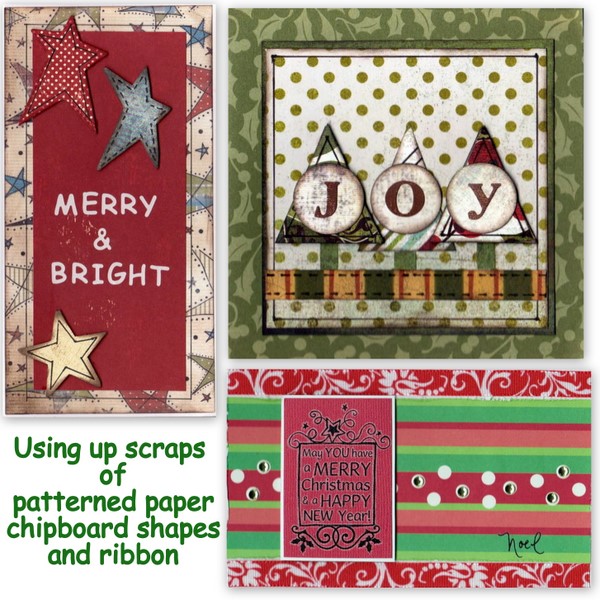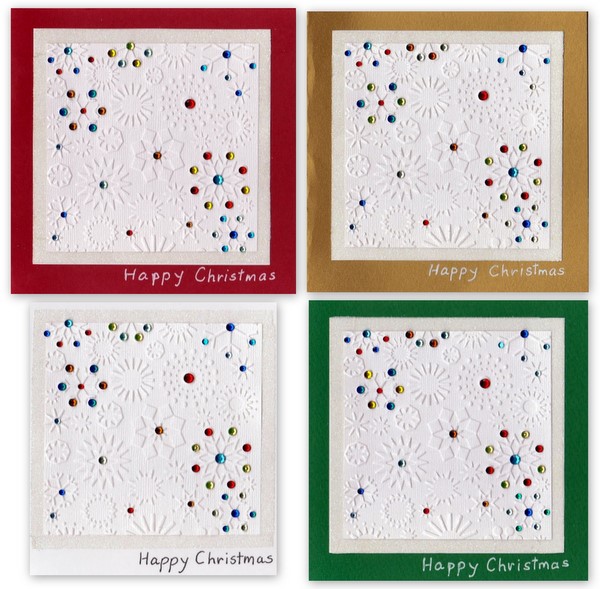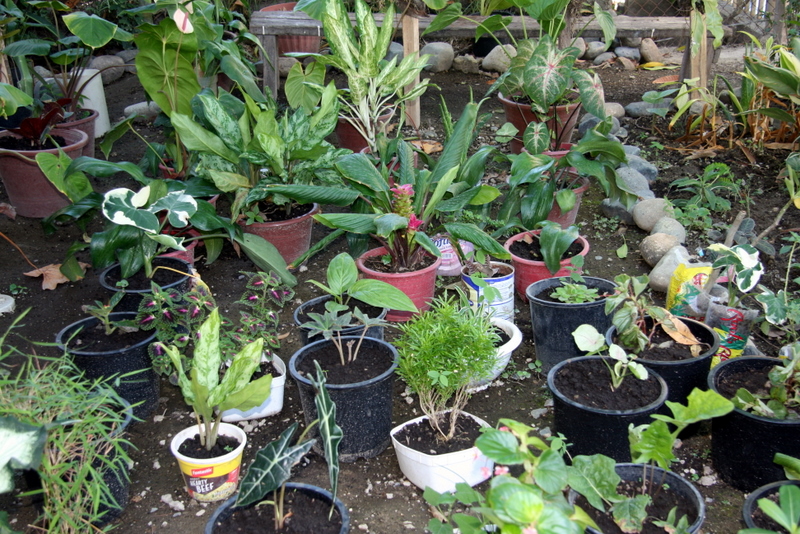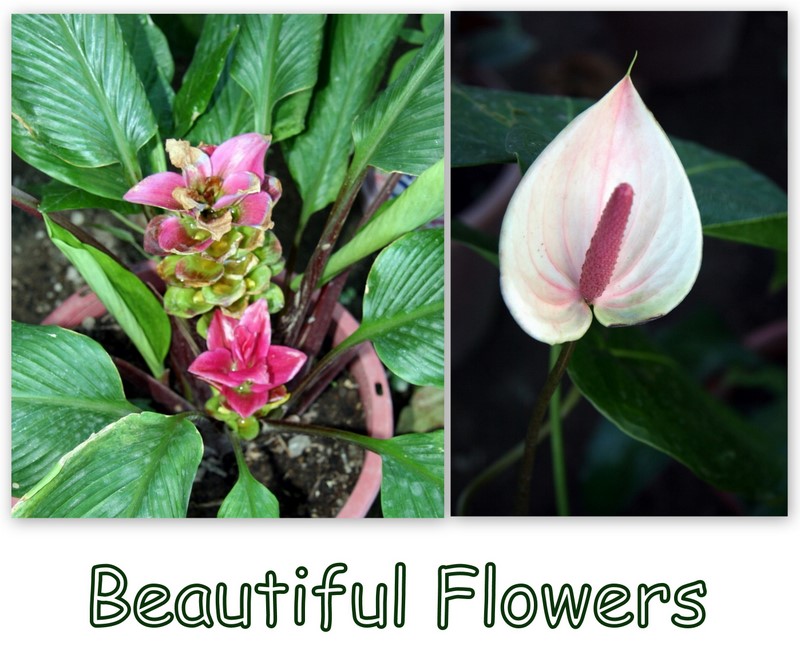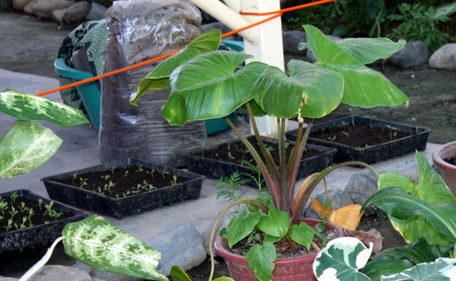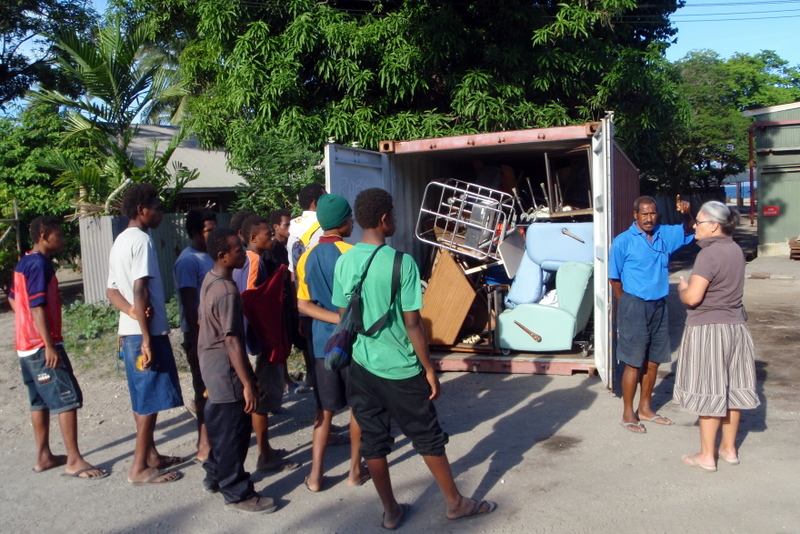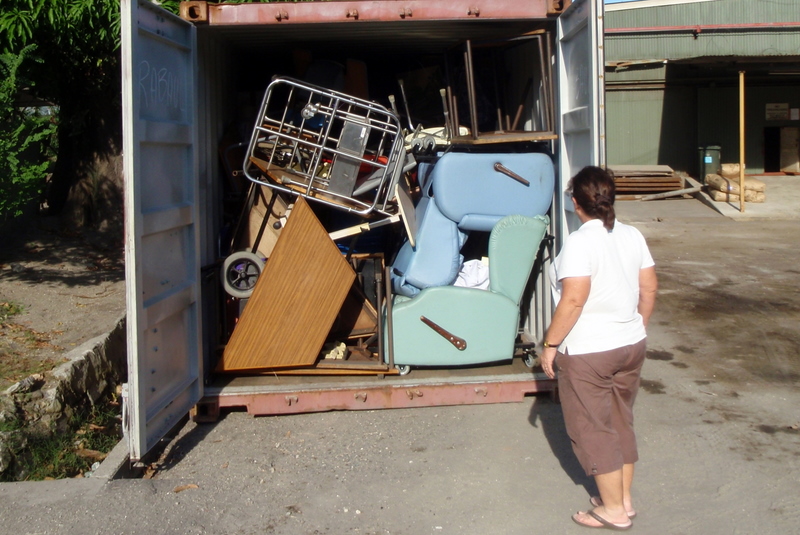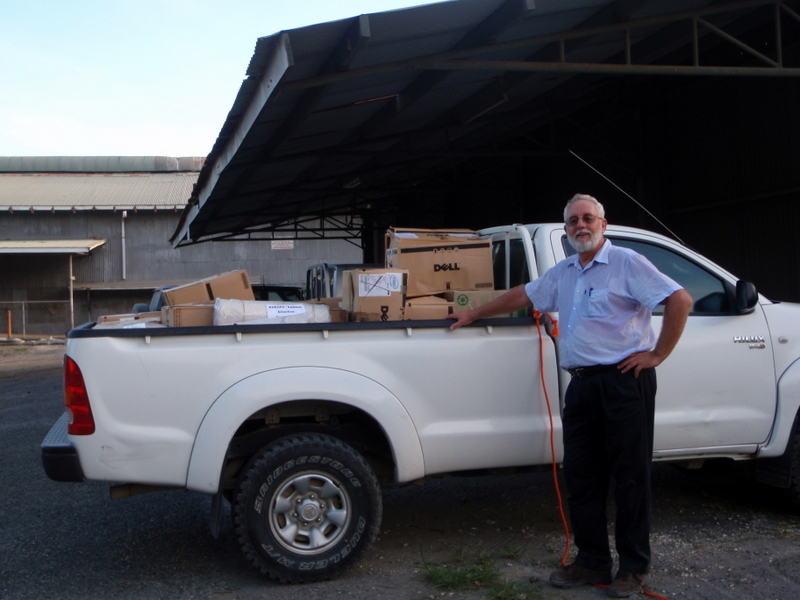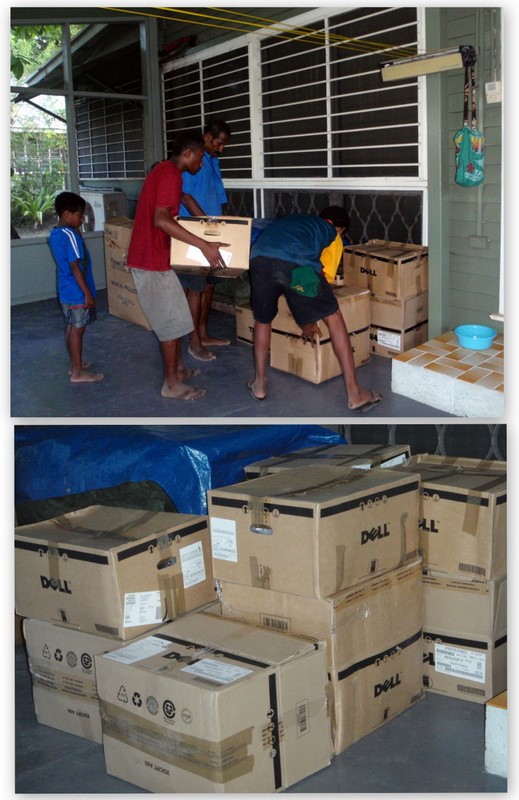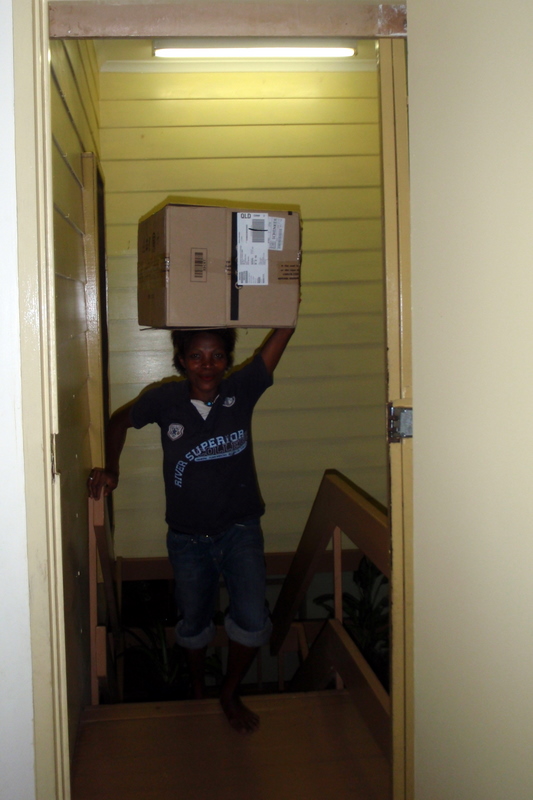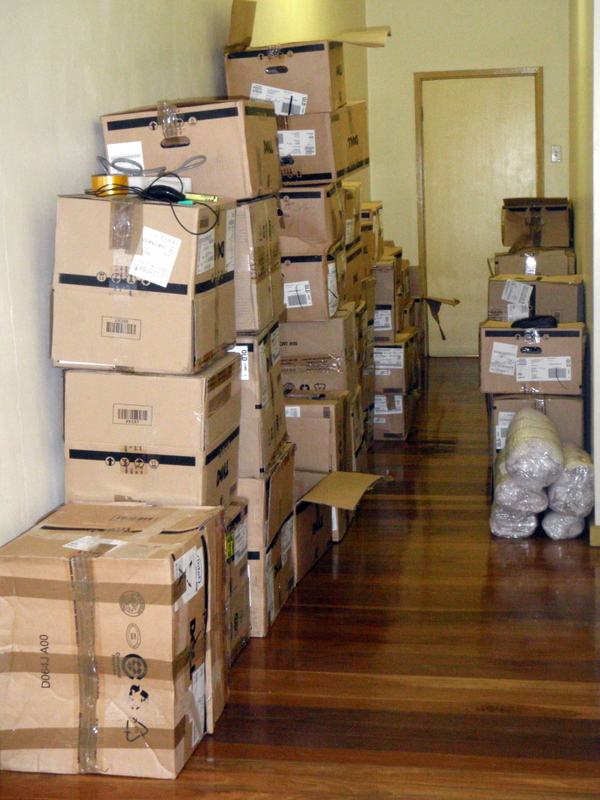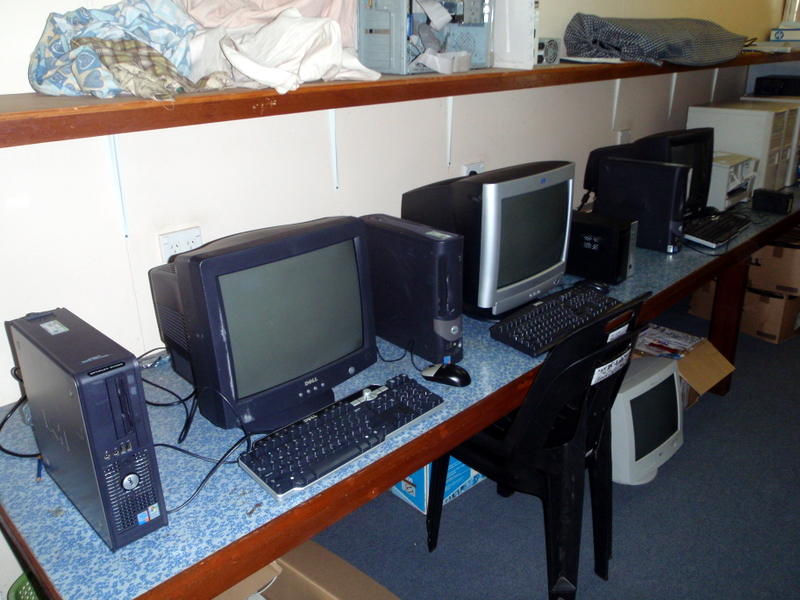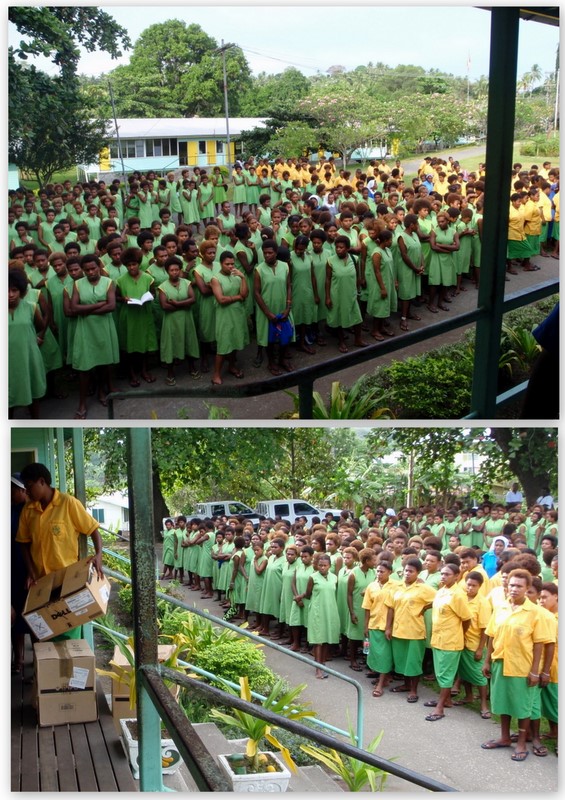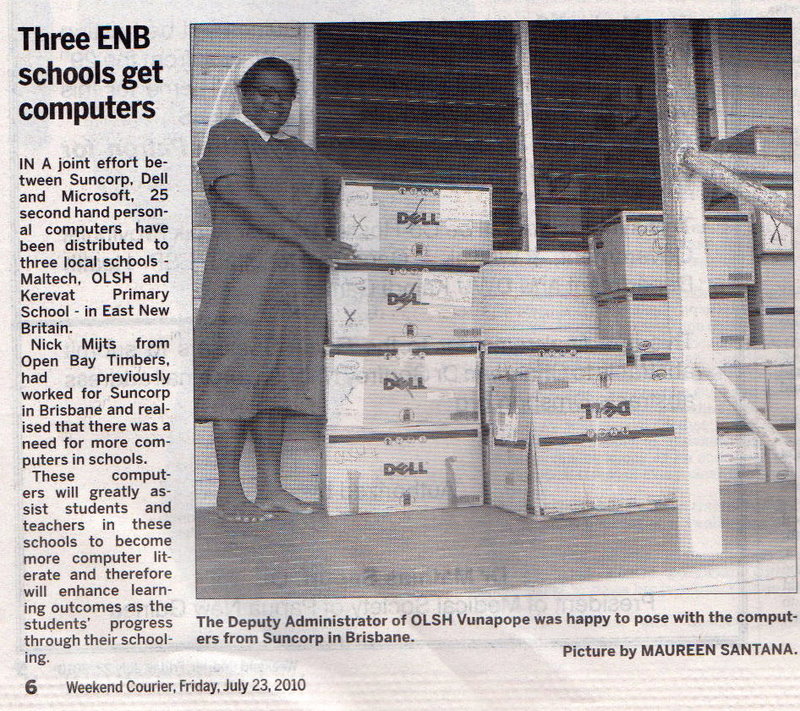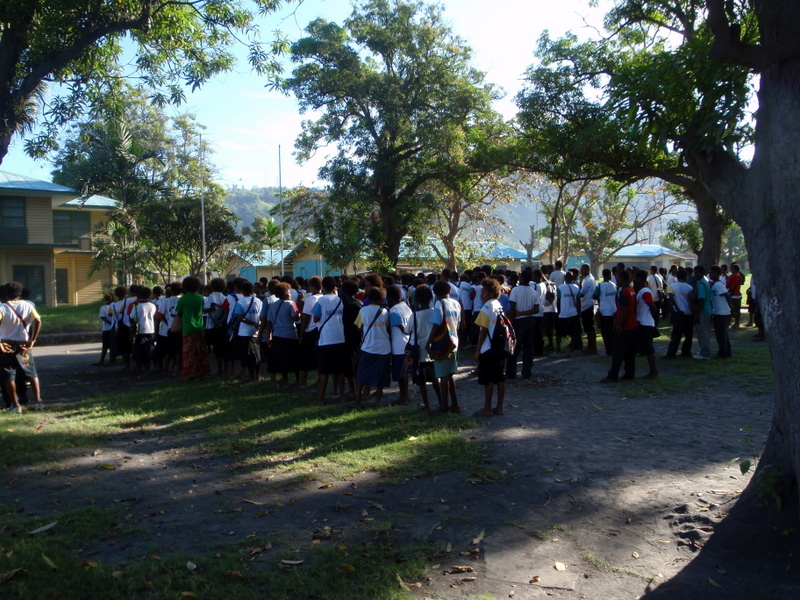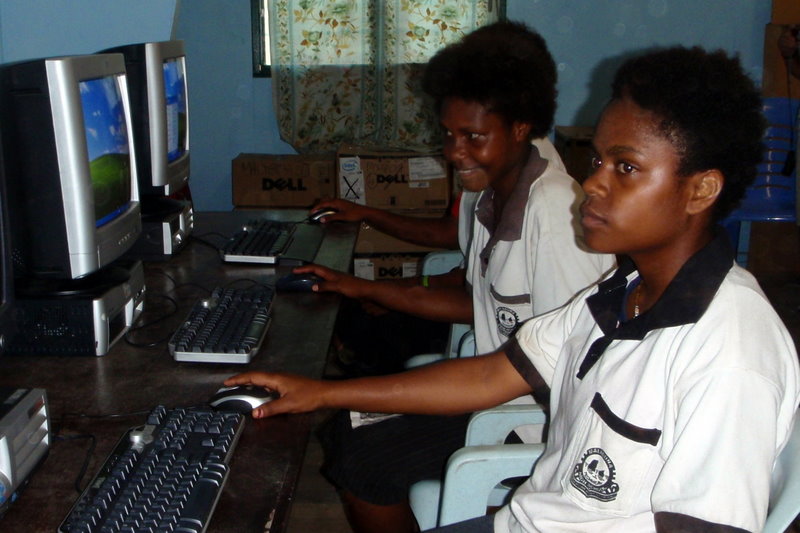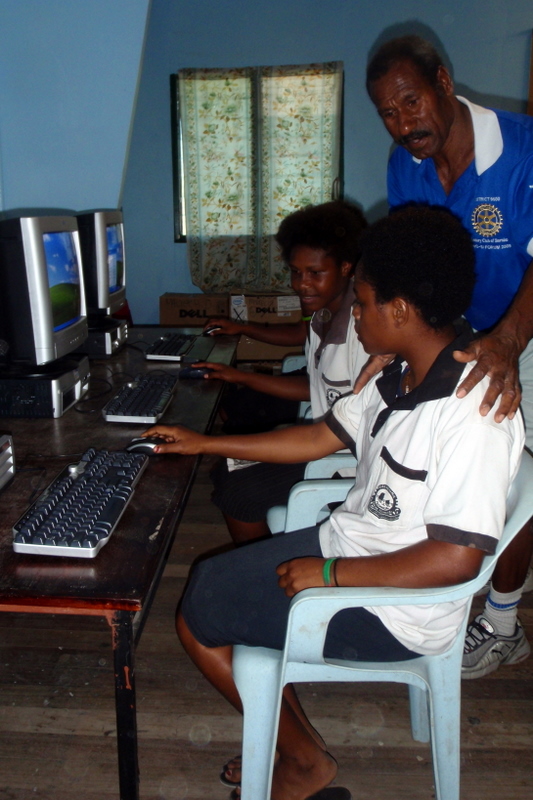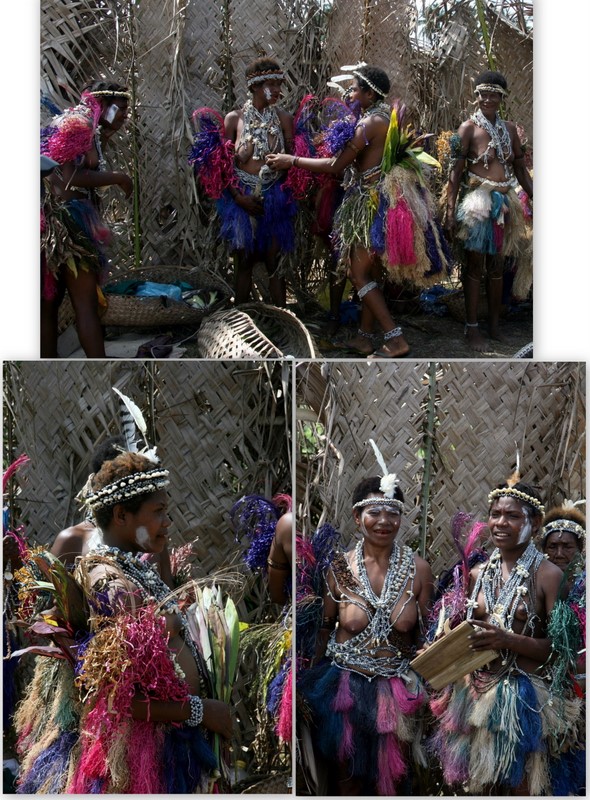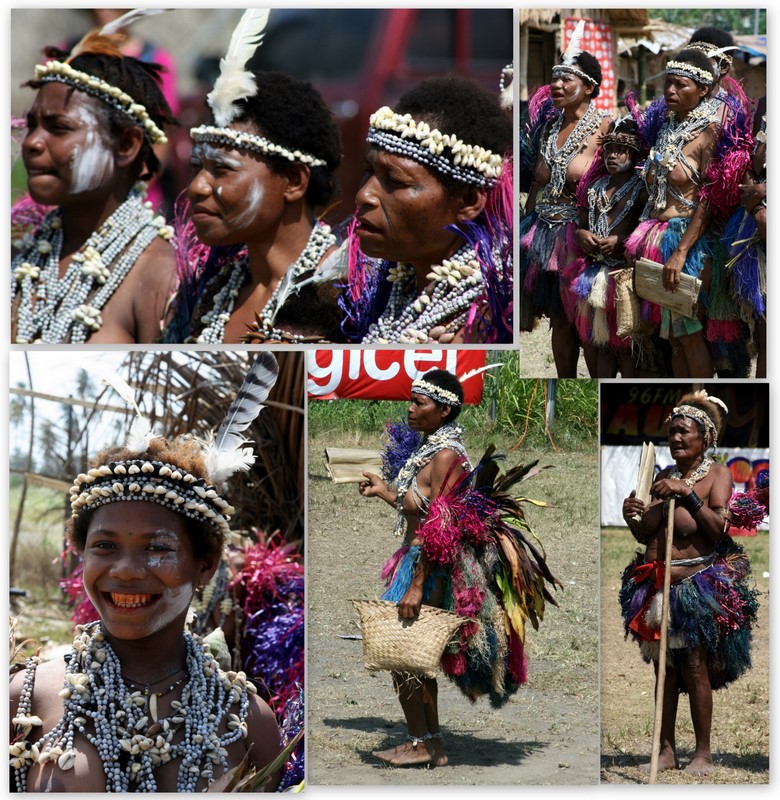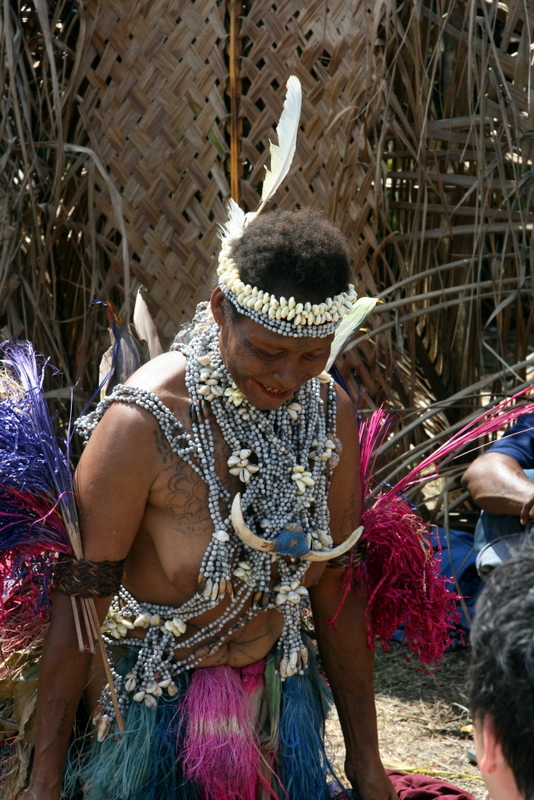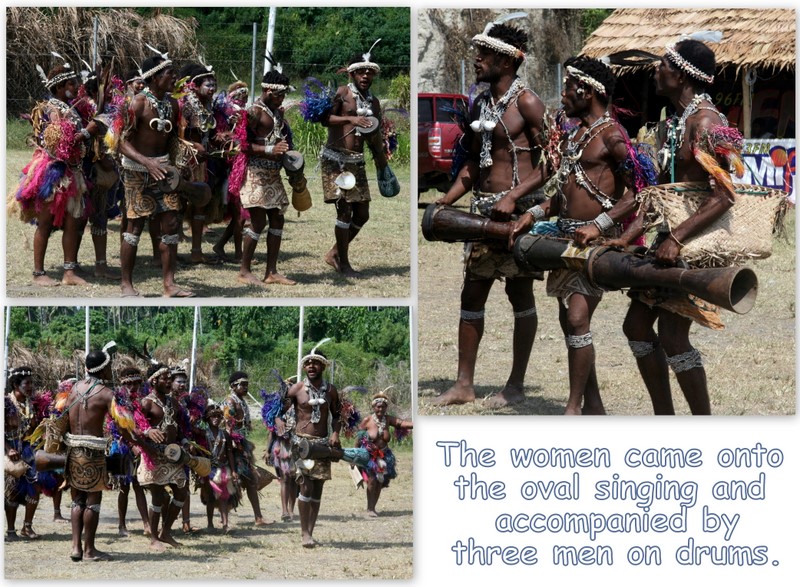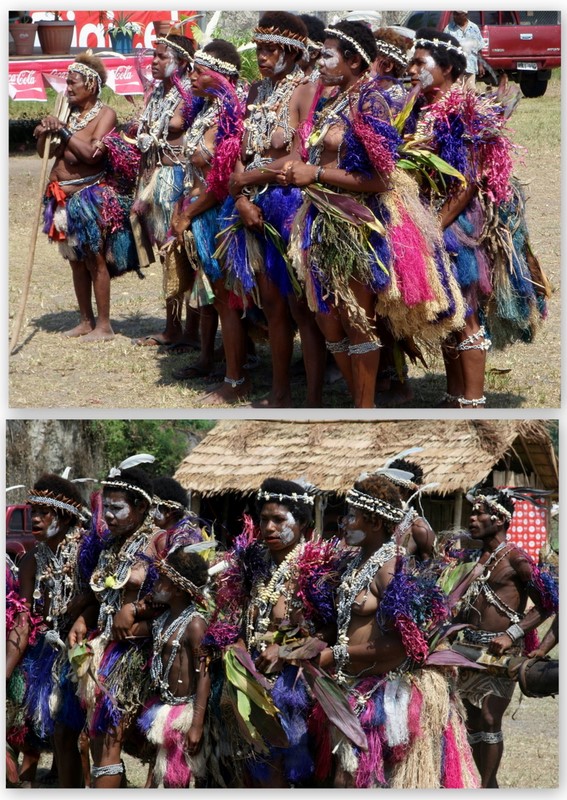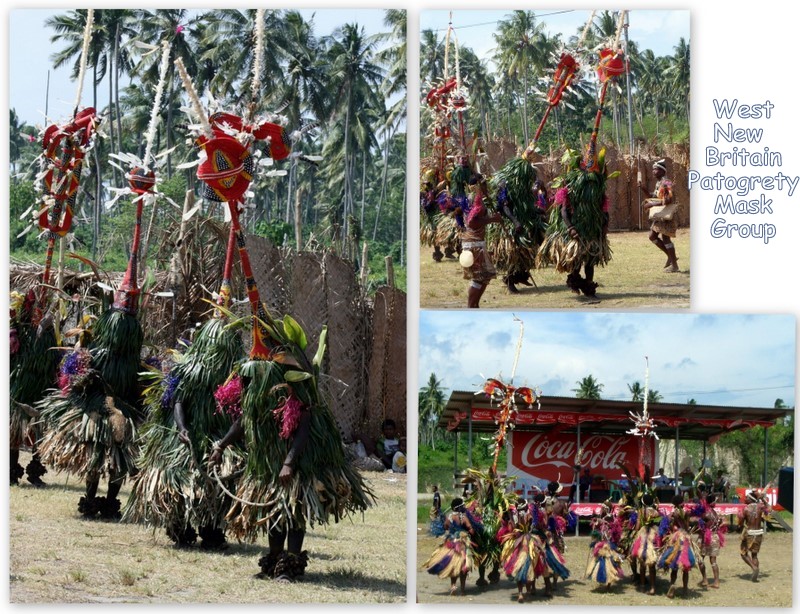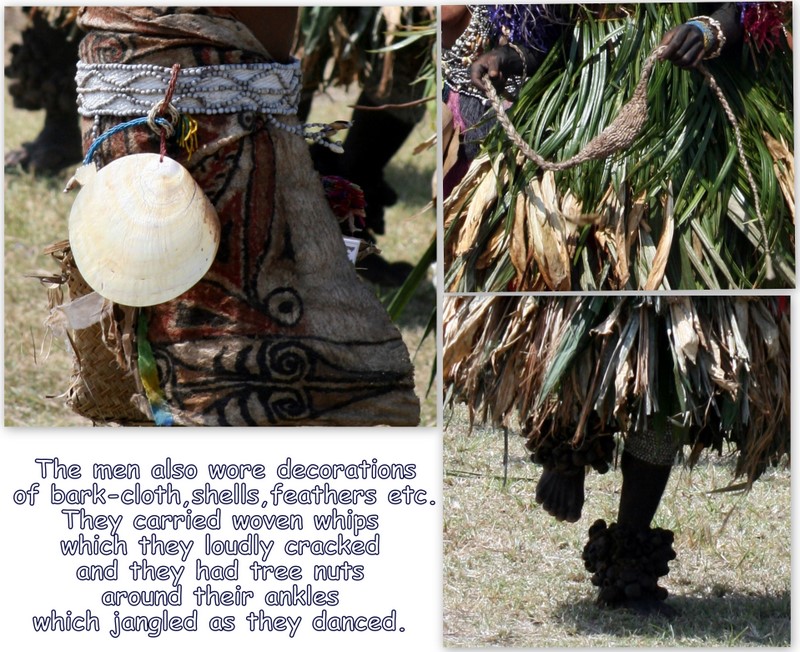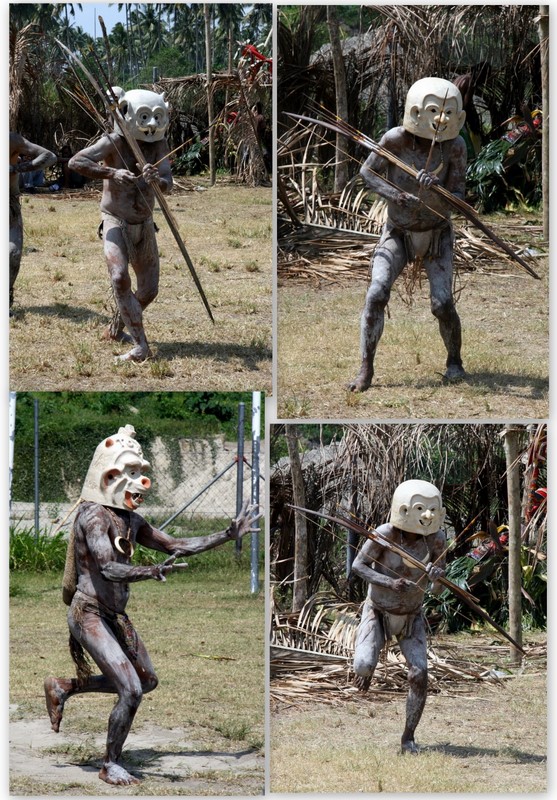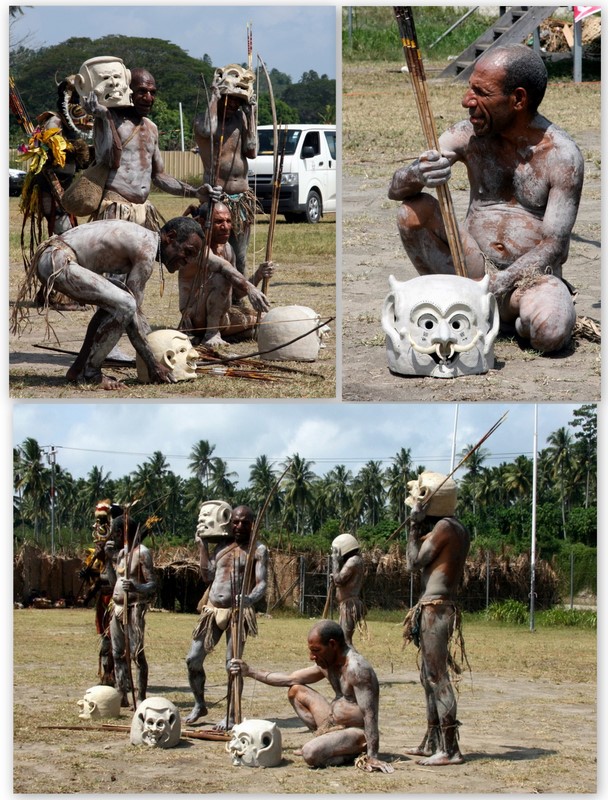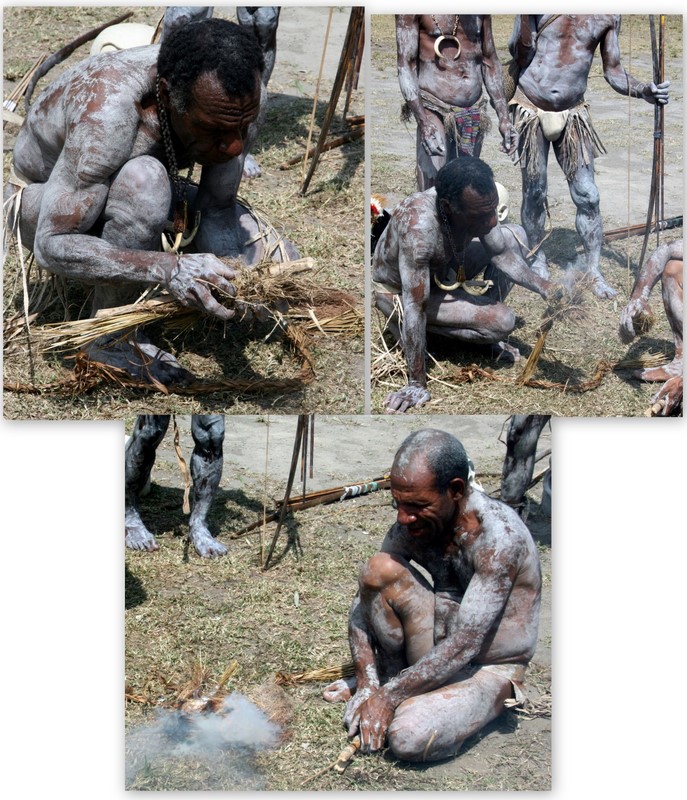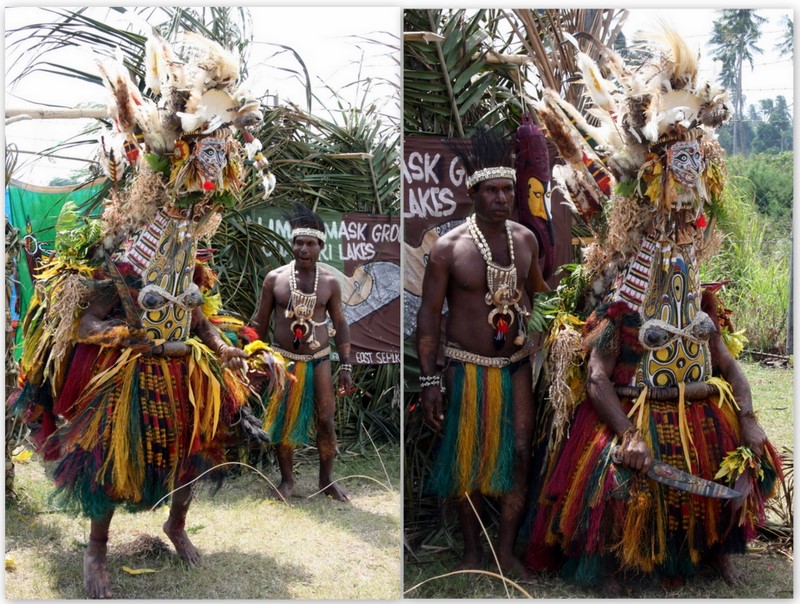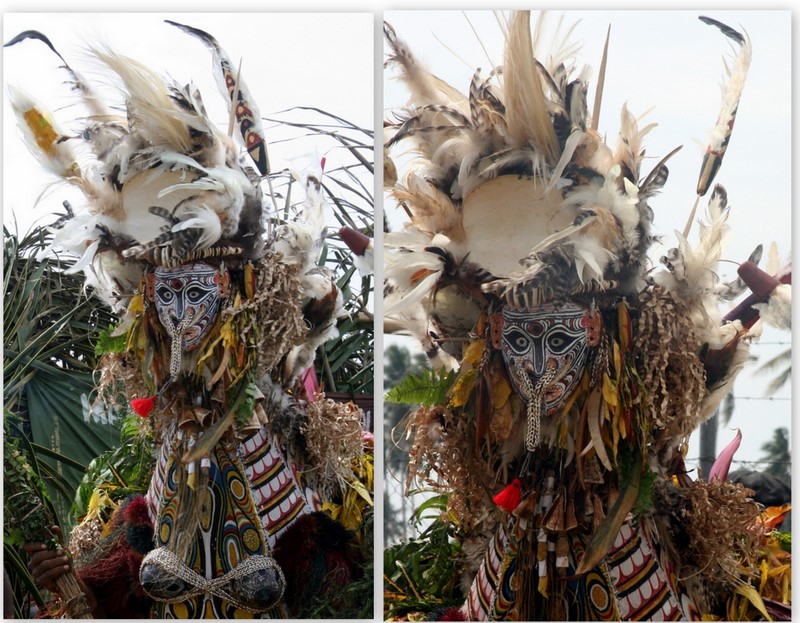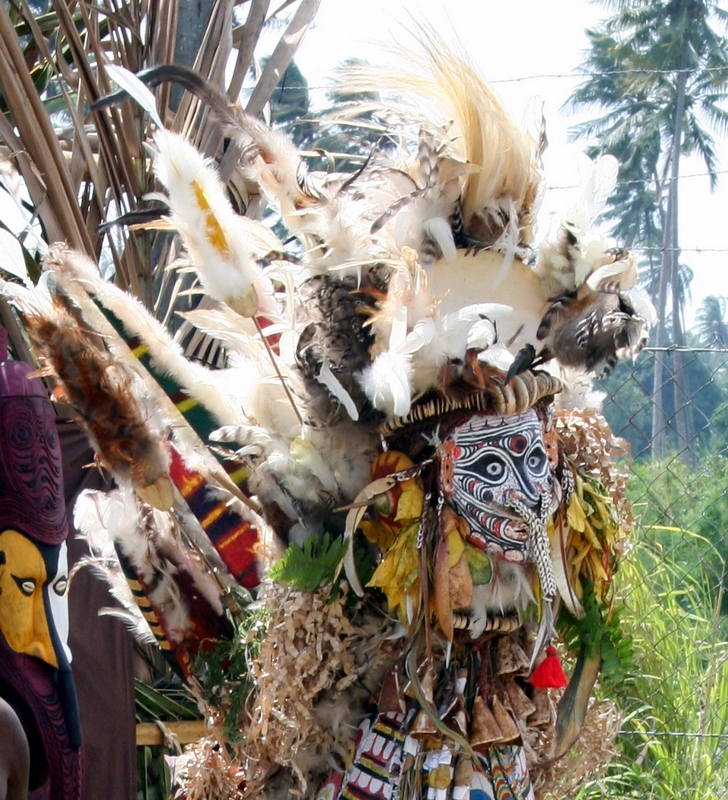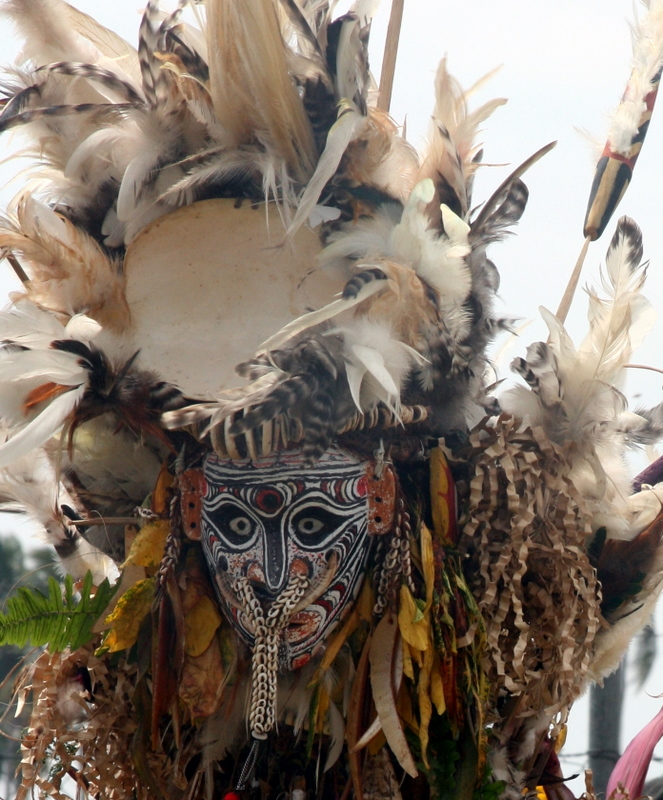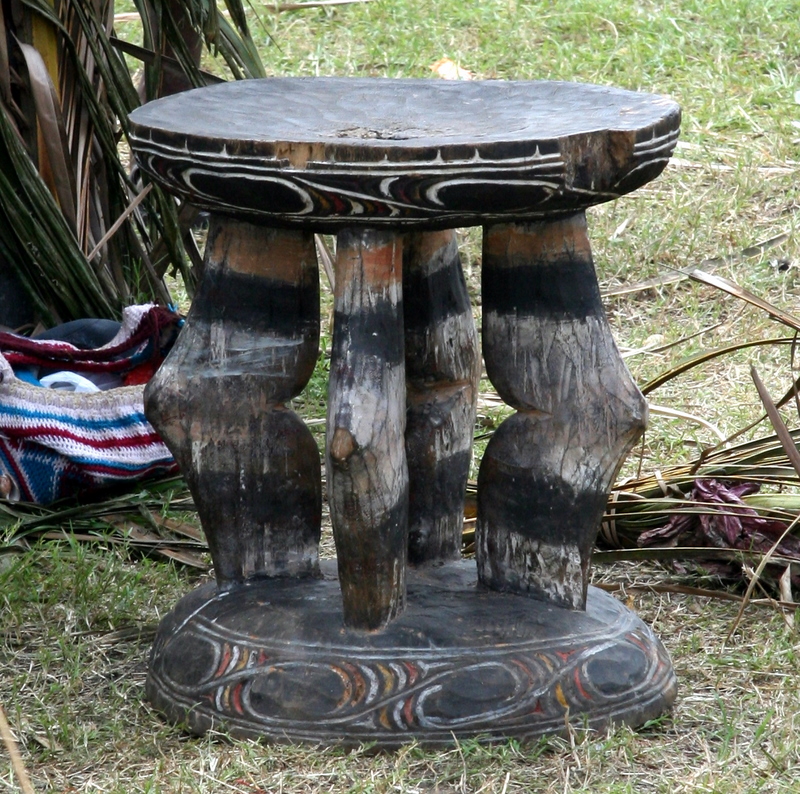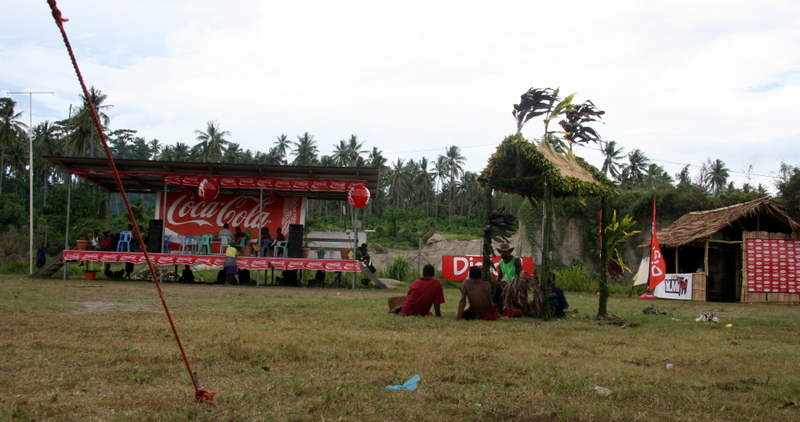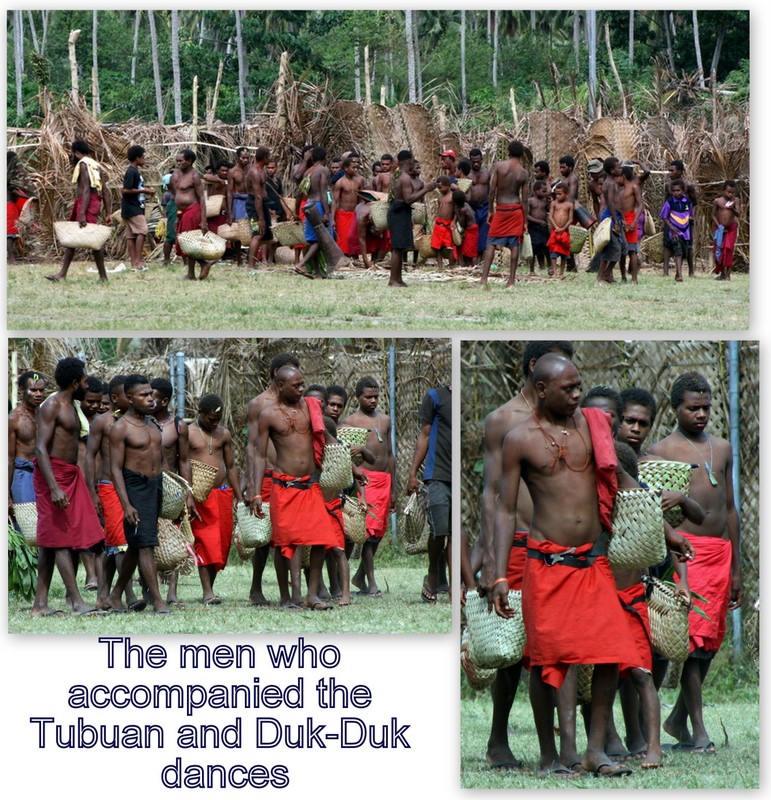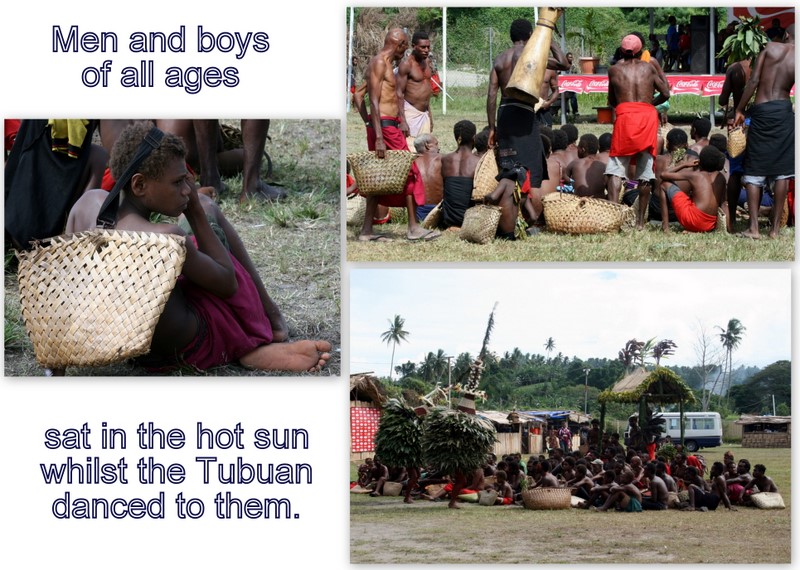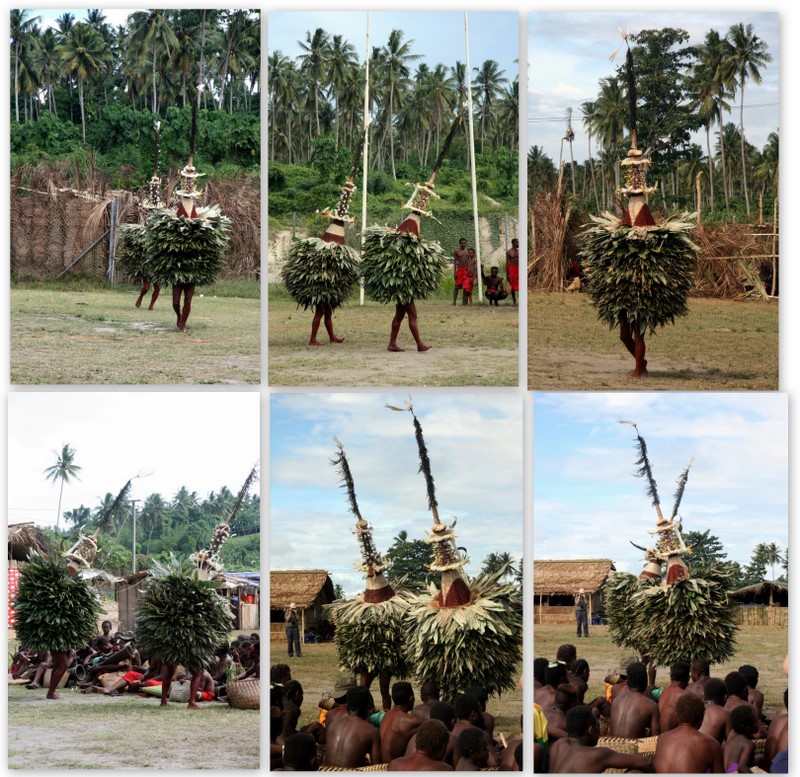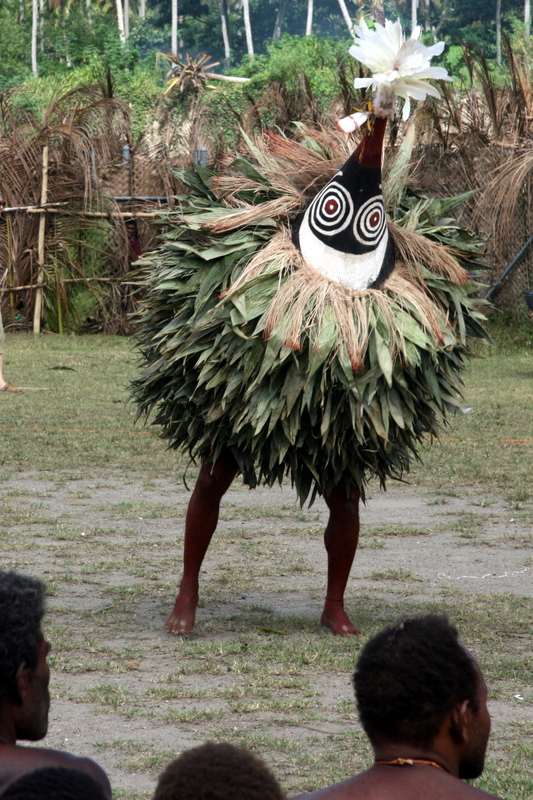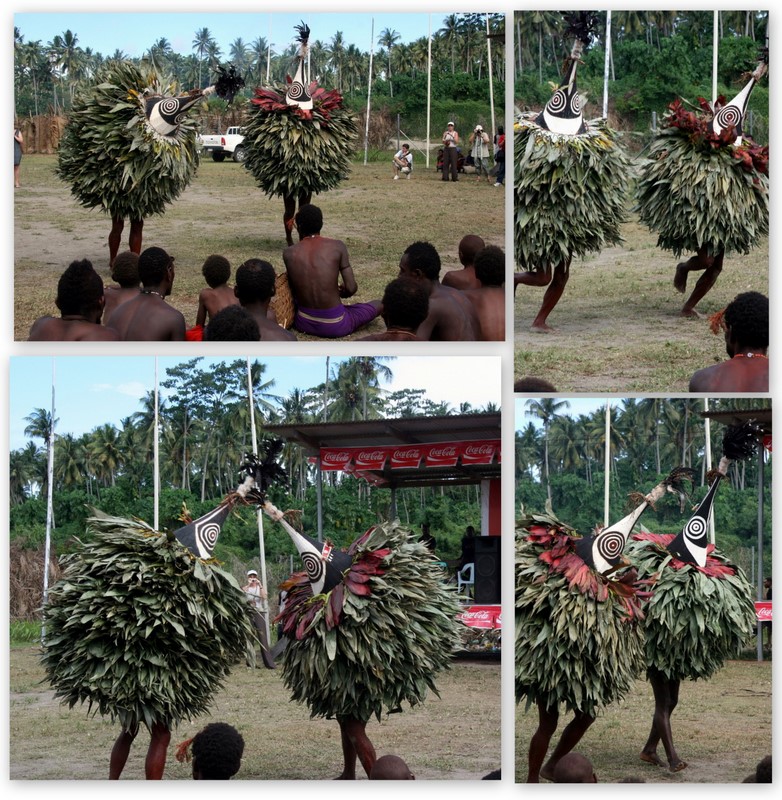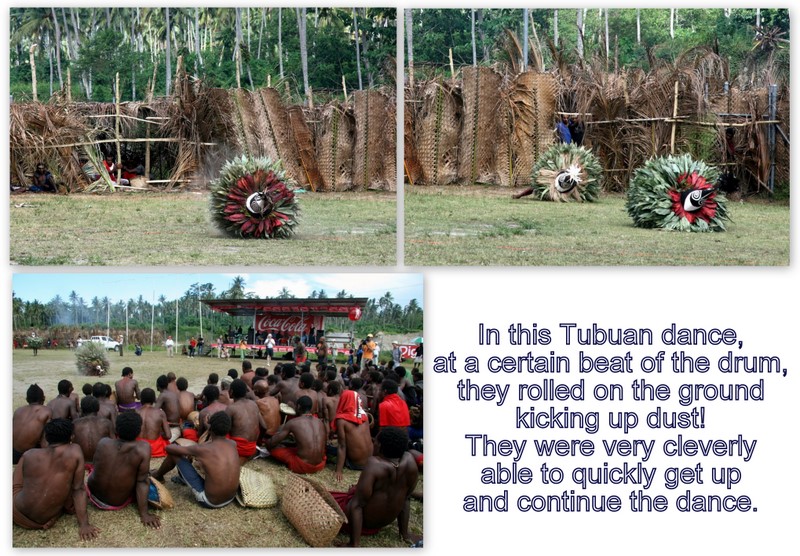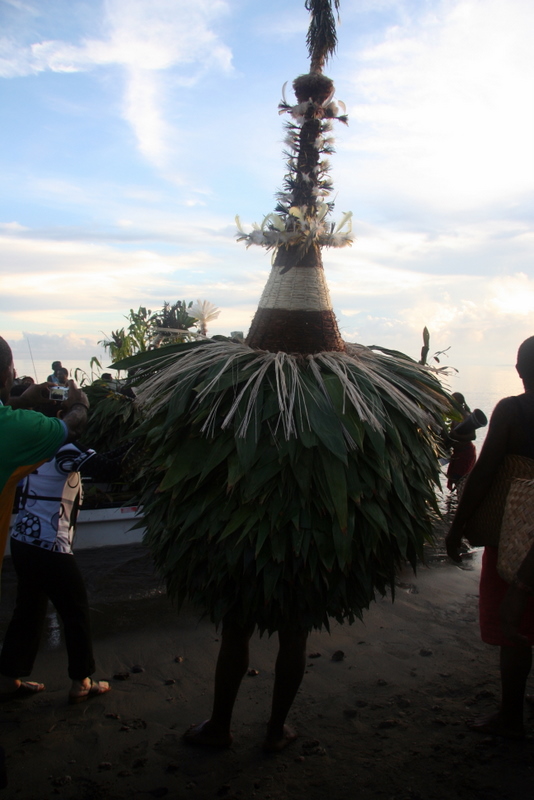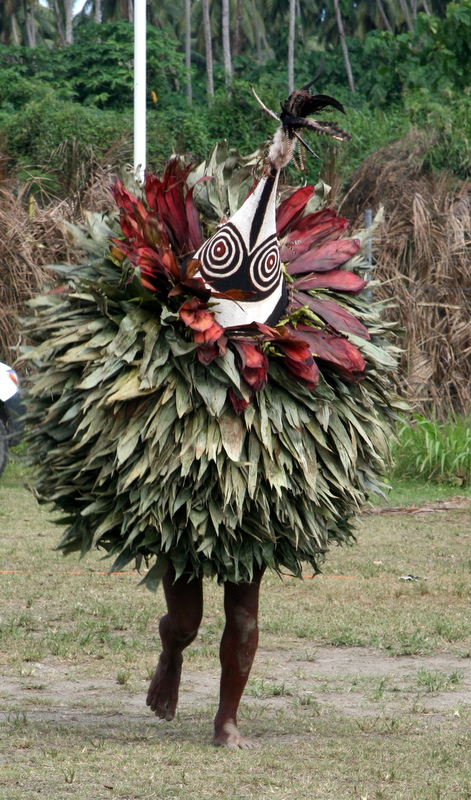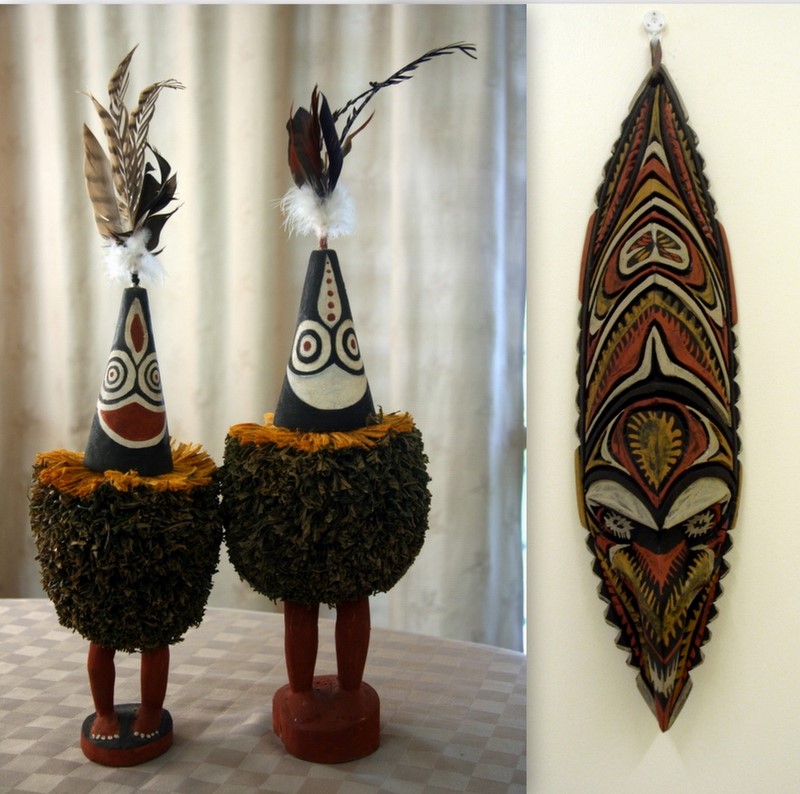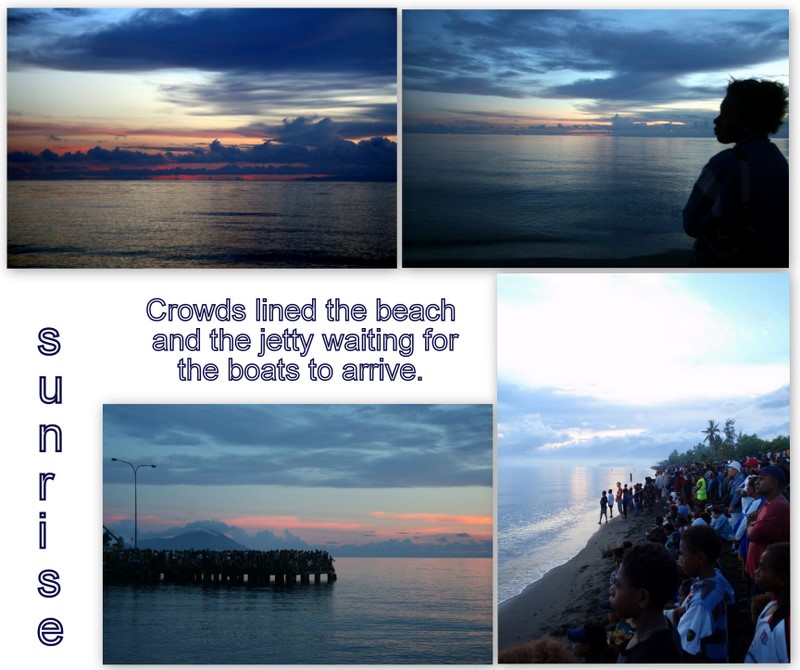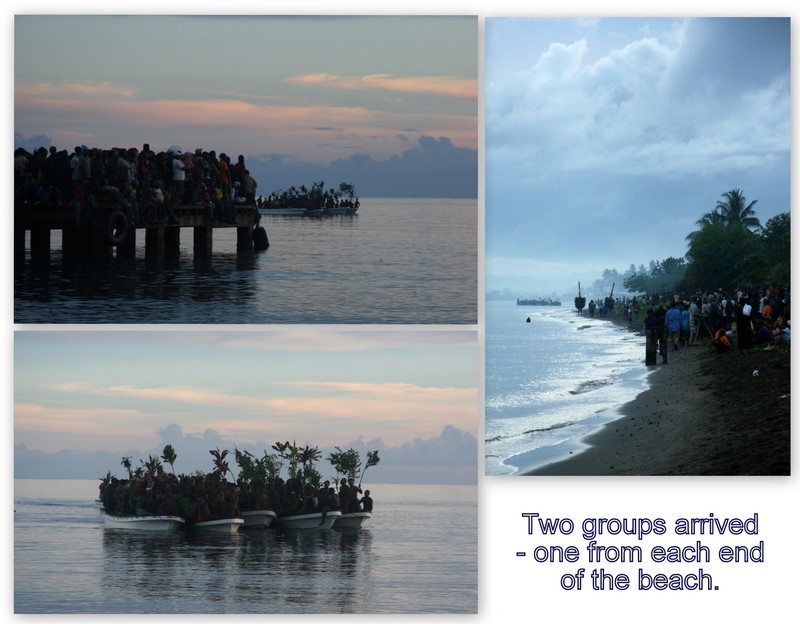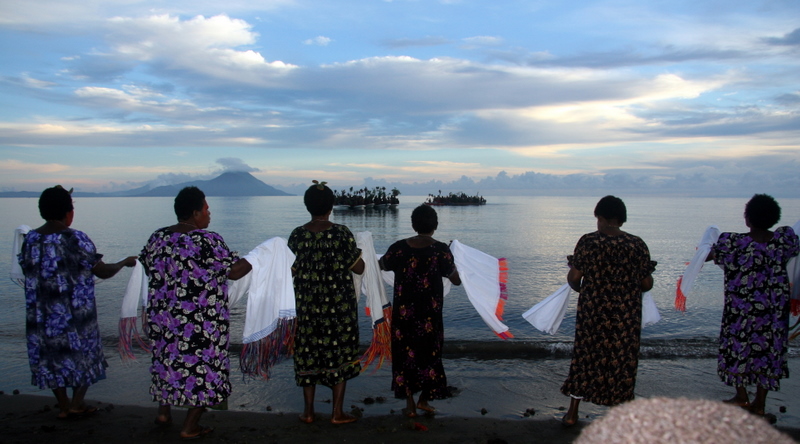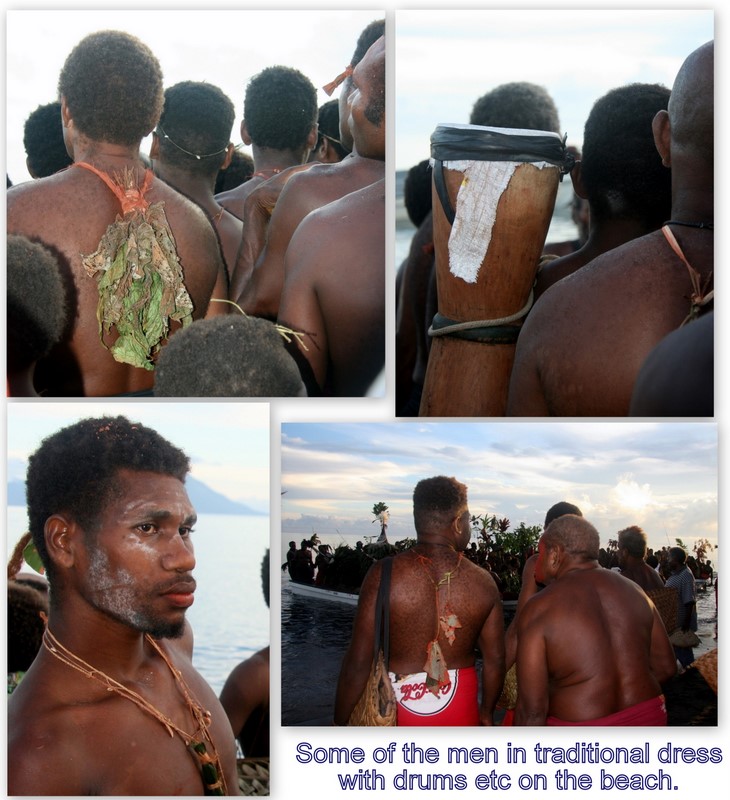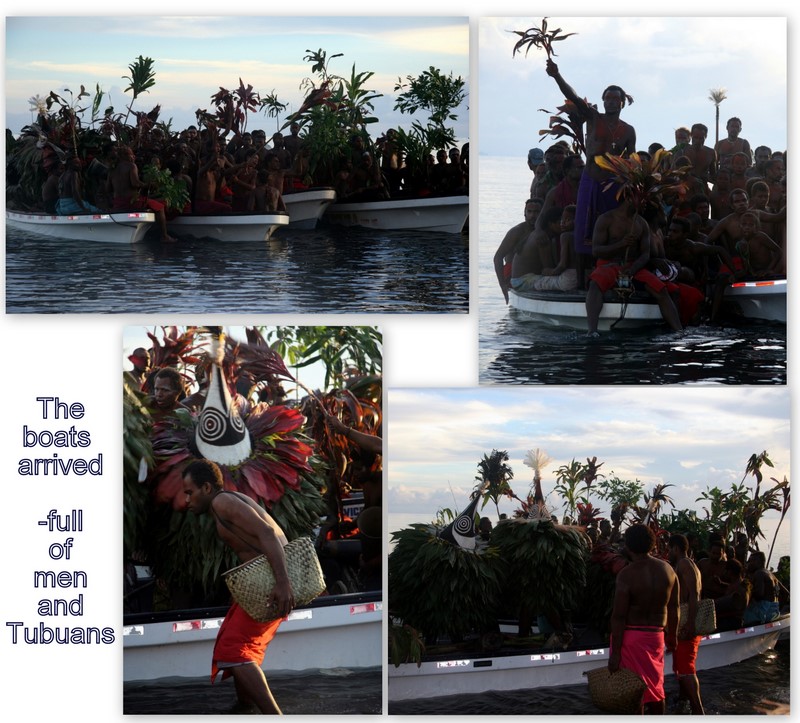Uncategorized
A Cool Spot!
by admin on Dec.16, 2010, under Uncategorized
Under our stairs there is always a laplap tied to the posts! Nick snapped these photos (with his new Iphone – Christmas present!!!) – during his lunch break yesterday.
If you look at this close-up you will notice a little bundle inside!
Kayline, who is two years old still has a sleep or two during the day and this is the coolest spot for her to have them. Stephanie started putting her in a ‘hammock’ under the stairs when she was only one year old. It is a bit of a tight fit for her now but she doesn’t seem to mind being squished into her little ‘day-bed’.
So Cute!!!
Ahhh! BLISS
by admin on Nov.15, 2010, under Uncategorized
My current definition of BLISS: R&R in Brisbane – unlimited fresh fruit and vegies; a weekend on the Gold Coast with hockey friends (despite the lack of sleep!); lunching with friends; popping over to the city on the ferry – SHOPS!!; reliable fast internet; a late afternoon round of golf; etc; etc………….
More Christmas Cards
by admin on Nov.01, 2010, under Uncategorized
Over the past few weeks I have spent two afternoons a week at a local Primary School making cards with them to sell at their forthcoming fete. I printed some shapes and pre-cut pieces for the younger children to make the following cards:
This simple design using squares was a favourite with the older kids and the parent helpers.
The little kids just loved the santa which I designed in Word using ovals, triangles, circles etc. – and all age groups wanted to do the paper-piecing reindeer!
I also used shapes in word to print onto cardboard some stars, trees and baubles for them to trace and cut out to make these cards:
For the last session with each group I took along all the remainder of my patterned paper and cardstock scraps for them to create their own designs – and they came up with some fantastic creations – unfortunately i have no photos of these as our camera has gone bugger up again!!
When I was cleaning out my papers I found a couple of sheets I bought some time ago in a pastel green with snowflakes on it – and I had triangles etc on the mind from the kids’ cards – and I created this card and made 8 of them using the two sheets of paper, some gold paper, cardstock scraps, some rhinestones etc!
NB: Having to scan to get images at the moment and colours etc not quite true!
Christmas Cards
by admin on Oct.01, 2010, under Uncategorized
I love Christmas!
For several years now, I have made all my Christmas cards. Last year (being in PNG and needing to fill in time!) I got a bit carried away – and made many more cards than I needed!
I make my cards by using up scraps of paper and card from my scrapbooking.
Here are a few of the many cards that I still have from last year:
Sometimes I take a pre-printed piece of card and just add a strip of paper, some ribbon or a charm and a message – so they don’t take too long to make!
I have a Cuttlebug cutting/embossing ‘machine’ and used it to emboss backing card or even to cut a shape to add to a card.
Last year, trees featured on many of my cards.
Last week I started making cards for this year. While I was in Brisbane back in July I bought 2 sheets of paper at the Kaisercraft shop and used them to make these cards – quick and easy – and I love the use of less traditional pastel colours! (Unfortunately the scanner hasn’t done real justice to the colours!)
I was able to make 12 cards using those 2 pieces of paper, some card scraps and a bit of kindy glitz!
The other thing that I did while I was home last time was to pre-cut and emboss some white card using my cuttlebug – and I have made another 2 dozen cards featuring the embossed ‘pictures’ and a few crystals and pearls.
A piece of ribbon or a hand-written message and they quickly came together!
Now, what do do with those 30 or so extra cards I have from last year????
Our Garden!
by admin on Sep.21, 2010, under Uncategorized
Where we live in PNG the soil is not suited to a garden. We didn’t even bother to have any plants in the first 18 months as regular ash fall from the volcano killed any plants that were around ……BUT…….. the volcano has been inactive for several months now (except for one short burst!).
Stephanie also loves to garden so when we saw some plant pots at one of the trade stores recently we bought them and Stephanie started to bring plant cuttings etc from her village. Then one weekend there was a plant sale at a local church so Stephanie and I went and filled the back of the ute (including Stephanie in the back to ‘watch the plants’).
Nick bought some shade cloth and very inventively gave us a bit of a ‘shade-house’ – he tied broom sticks to the security fence then tied the cloth to the fence and to the beams under our high-set house. He also brought back bags of soil last time he visited Open bay.
Our ‘garden’ is all in pots – and every time the septic tank has to be pumped we will have to move them all – but we are very proud of it, nevertheless.
The plants have grown beautifully in the couple of months that we’ve had them. The foliage on some of them is quite spectacular!
and we are even starting to get some flowers:
Last time I was in Australia I bought some lettuce, Basil, tomato, capsicum and rockmelon seeds and Stephanie has successfully grown some seedlings – she even boiled the soil first! We are now hoping to bring in some more soil and make a little vegie garden out the back!
Stephanie’s father is also trialling growing some of these out at the village – so fingers crossed – we might have some great salads soon!
Computers for Schools – Thanks Suncorp and Rotary
by admin on Aug.14, 2010, under Uncategorized
Just over a year ago, Maria started volunteer work in a local Secondary girls’ school – OLSH. She quickly realized that they were very under-resourced and, in particular, only had a few computers for over 700 students.
Nick discussed this with a staff member at Suncorp – where he had previously worked. After several emails Nick contacted Chris Whiteford, Executive Manager BT Services, Suncorp Brisbane. Chris readily agreed to assist and rallied his staff to participate in a project which resulted in 25 computers for us to distribute to schools in the local area.
These second hand computers are normally sold off by Suncorp to the public. Instead, the staff of the Brisbane Suncorp Business Technology Group raised the money and purchased them as part of their ‘charity’ program. Dell arranged the packaging for shipment and Microsoft donated sufficient MS Office software to run on all of them. Chris has been the key person in coordinating the project, organising Dell and Microsoft contributions.
In March of this year the computers were shipped by Rotary from Brisbane through to Rabaul. There was one little hiccup when the container went to the Solomon Islands (and we received theirs!) but it was all sorted by our Rotary friend, Anne, and finally the computers arrived in July.
We went over to Anne’s place at Rabaul to help unpack the container. Students and a teacher from one of the receiving schools (Maltech) assisted to unpack the container. The boys are boarding students at the school.
We were all excited when we finally found the computer boxes at the back of the container.
We loaded our ute with computers to take to our house in Kokopo and stored the rest of the computers in Anne’s house until we could come back to collect them at the weekend.
Our HouseMary (Stephanie) helped Nick carry the boxes up the stairs at our house – she happily assisted Nick to move the computers into the house and again helped load them when they were ready to take to the schools. (I LOVE how she always carries heavy items on her head. She is only a slight build but carries quite heavy items this way).
The computers were stacked in the hallway at our place and for over a week Nick spent each evening after work checking each computer and loading software onto them.
Because we received more computers than at first anticipated we were able to give them to three schools.
OLSH received 16 and now have a small computer lab of over 20 computers as well as four computers in their Library.
At a special assembly we presented the 16 computers. The staff and students were very excited and grateful and even sang a hymn of thanks for us which was quite moving – they all sing so beautifully!
This is where Maria Volunteers and along with the Principal, Maria spoke at the assembly explaining fully how the donation of computers evolved. The school currently has a young Japanese volunteer working in IT at the school and with the donation of 16 computers to supplement the few they already had, they have set up a small computer lab. This is a huge asset to the school’s curriculum.
This photo/article appeared in the local newspaper outlining the project.
Two of the computers will go to Kerevat Primary school (soon to be delivered – when our holiday finishes). This will be their first computers!
Seven of the computers went to a secondary school in Rabaul – Malaguna Technical School (Maltech). Since the conception of this project, this school has had three of its buildings burnt down losing their Library and all of the computers they had.
We spent a Sunday afternoon at the school, installing the computers and talking to the Principal and a teacher and it was apparent that they have been quite devastated by this loss as there is no replacement of these buildings or resources as might occur in Australia.
Maltech also held a special assembly for the presentation of their computers.
It is difficult to describe just how VERY grateful the staff and students were for the donation. We would dearly love in the future to be able to source more computers for this school. We are also trying to source books from Brisbane schools for their Library.
These two photos show students at Maltech enjoying access to the new computers.
Mask festival – Part 3
by admin on Aug.08, 2010, under Uncategorized
Finally got time to finish posting about the Mask Festival. We are in Brisbane for a break at the moment and the time is flying by!
On the Saturday morning Nick and I went up to the Mask Festival. We watched three different cultural performances.
The first performance was by the West New Britain Patogrety Cultural Group. This was the only group to include their women in the performance. The women and girls dressed and prepared outside the ‘fenced off’ area – as this was a sacred area for men only.
The women ranged in age from young girls to older ladies and wore costumes that were very colourful and made from beads, feathers, leaves etc.
Some of them were also tatooed.
The women then came onto the oval and sang and clapped – ‘calling’ the masked group of men to come out and perform. Their singing was beautifully harmonised. A couple of men on drums accompanied the women.
When the men came out, it was obvious that their masks had several differences to the Tolai Duk-Duk.
The head-dress was taller and colourfully woven, they had seeds/nuts (similar to gumnuts) around their ankles and these made a significant noise. They also carried ‘whips’ woven from a string-like material and they made a loud whiplike noise when used during their dance.
The dance obviously told a story with the men and women dancing together, the whips cracking seemingly to bring the women to order, and at the end dancing in harmony with each woman/girl partnering a masked man – this is my interpretation of the dance and I am not sure how accurate it is! Either way it was very interesting and different to any others I had seen.
The next performance was by the Asaro Mudmen.
The Mudmen come from Asaro – just outside the town of Goroka in the Eastern Highlands Province of Papua New Guinea. They were the first of two mainland groups which we saw perform.
Legend has it that the mudmen were defeated by an opposing tribe and forced to flee into the Asaro River. They waited until dusk before attempting to escape. The enemy saw them emerge from the muddy banks covered in mud and thought they were spirits. Most tribes in Papua New Guinea are very scared of spirits, so the enemy fled in fear, and the Asaro Mudmen were victorious. On their way home they ran into another tribe. By then the mud was all dry and cracked and they must have looked frightening. The other warriors got scared and fled. After that episode, aware of the fearful impression it had made, the warriors of Asaro always covered themselves with mud before going to war, keeping the illusion alive.
This performance was held in silence – no music, clapping etc. The Mudmen crept out with their bow and arrows and stealthily and agilely performed for us.
Today they perform in a peaceful manner with no warlike sounds or moves. I actually found them quite cute and even a little bit cheeky! – although some local children ran away in fear when the mudmen came close to them.
This masked character also performed with the mudmen – not sure of its significance!
At the end of their performance, the mudmen removed their (obviously heavy!) masks. It was apparent these men were not all young which I found quite remarkable given their very lean and fit build and the agility they showed during their performance.
They also demonstrated traditional fire-making – accompanied by a couple of flute-like instruments.
The mudmen were my favourite performers!
The last performance we watched was by the East Sepik Mask Cultural group. This group also came from the mainland (East Sepik Province -the Sepik River area). Rather than perform out on the oval, they performed in a small defined area in one corner of the grounds – probably due to the fact that the very elaborate mask had no holes to see through – thus denying the wearer any means of sight! An ‘assistant’ aided the masked man in his movements around the defined space.
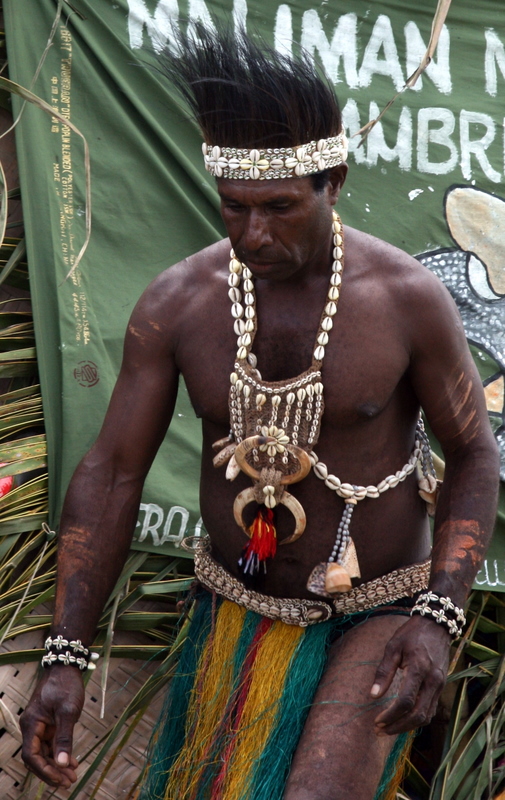
Those are cassowary feathers around the assistant’s head!
There are mask-making villages all along the Sepik. The villagers keep small gardens and the women fish. They trade fish to the inland Sawos people for sago flour, the starchy pith of the sago palm, which is the main staple of the Sepik diet. There is a small cash economy along the Sepik and the people sell fish, as well as carvings for cash. The middle Sepiks have a common ancestry, but each village is independent and this is reflected in their art, including their masks. Every village carves in a distinctive style.
The men carve masks from soft wood, although some are made of clay over-modeled onto turtle or coconut shell. They mix paints from earth pigments and charcoal. The masks are decorated with shells, pig tusks, and cassowary feathers.
Few masks are worn directly over the face, which explains the lack of holes for eyes. Some are fastened onto a large cone-shaped wicker framework for a dance costume called a tumbuan. Raffia is knotted into the bottom hoop for skirting and flowers, fruit and leaves added on for color and power at the time of the ceremony. Other masks are made only for display, most often in the men’s Haus, to attract powerful and useful spirits.
We were amazed by the detail and decorativeness of these masks.
Check out the huge shell!!
I also thought this little carved stool was worthy of a photo! The masked tibuan sat on it as part of the performance!
The mask Festival was a wonderful cultural experience which we thoroughly enjoyed.
Mask festival – Part 2
by admin on Jul.21, 2010, under Uncategorized
After the dawn arrival of the boats to open the mask festival, the activities moved to the local football oval. On the Wednesday afternoon I took the wife of Nick’s boss up there as the program said that the mud-men were performing at 1pm and I was keen to see them. It was an interesting afternoon – my companion, who is visiting from Japan for a few weeks, only spoke Japanese so we communicated mostly in sign language. It was hot, windy and dusty and no performers in sight!
We sat under a Coca Cola ‘tent’ for an hour and were rewarded for our patience – although not by the mudmen as they were a no show that day. However, from 2pm onwards there were several performances by Tolai Tubuan groups – from six different villages.
After our long wait, some men and boys assembled by the ‘sacred men’s area’ (no females allowed in there) wearing red laplaps and carrying their traditional ‘man bags.’
They then sat together on the oval, chanting, singing, playing drums and clacking sticks ‘calling’ the performers and accompanying their dances. They sat in the hot sun doing this for a couple of hours!
There were a few Duk-Duk dances.
But most of the groups featured the ‘female’ Tubuan mask.
Whilst all similar, there was some variety in appearance across the groups.
They danced in pairs and there was great variety in the dance style of the different groups.
One group featured an action where they dropped to the ground and rolled. They were very flexible and agile and despite their masks and costumes were able to quickly get up and continue dancing again.
We really enjoyed these dances and I took HEAPS of photos – thank goodness for digital cameras!
Nick and I returned to the festival on Saturday morning and much to my joy we saw the mud-men – more about this in Part 3!
Mask festival – Part 1
by admin on Jul.20, 2010, under Uncategorized
The Mask Festival was held here over four days of last week. We missed this festival last year as we were in USA for Ben’s wedding – so we were really looking forward to experiencing our first mask festival – and we weren’t disappointed!
A bit of history first:
The first National Mask festival was held in Port Moresby in 1995 as were the following three festivals. In 1999 the festival moved to Madang where it stayed for two years before it moved to East New Britain (ENB). This is the 16th year of the Mask festival with ENB hosting it for the 10th consecutive year. In 2001 the then Minister for Culture and Tourism declared ENB as the permanent home and the Festival has stayed here since.
The performing groups that have participated over the years have been varied, manifesting mask cultures of the respective Provinces. This is a result of the great diversity of mask culture which is found in PNG today.
For many years, the main features of the Festival have been the Tubuan performances and the Baining fire dancers of ENB. However, the groups coming from the other Provinces are also very interesting to watch and are quite spectacular in appearance.
The National Mask Festival is one of four annual National festivals which are funded and partly organised by the Cultural Commission.
The main purpose of these Festivals is to encourage the maintenance of traditional cultural forms by the people as ‘living cultures’ – in this case Mask Cultures.
The festival commenced with the arrival of boats at daybreak – these boats transporting Tolai Duk-Duks from local villages.
Some history for the local Tolai Duk-Duk (male) and Tubuan(female) masks:
The Duk-Duk is a revered god– part of a secret society, and part of the traditional culture of the Tolai people of the local area. The Duk-Duk society has religious and political as well as social objectives. Once women and children were forbidden to look at this figure – but traditions are more relaxed now.
The Duk-Duk society uses male Duk-Duk and female tubuan masks. Tubuan and Duk-Duk masks are made of barkcloth or mesh shaped over conical cane frameworks. Both have layered skirts of red and green leaves down to their knees. Tubuan masks are topped with tufts of feathers. The less important Duk-Duk are faceless, but taller and have elaborately carved openwork wood peaks.
The society originally featured the Tubuan, accompanied by the Duk-Duks, acting as enforcers. They collected fines assessed against rule breakers and their relatives by the village elders. Traditional fines were paid with strings of shell money. Penalties for not paying up could include burning down an offender’s house. It would seem that the society is today much discredited and its practice has been dying out since around the start of the 20th century. However, the Tolai of Papua New Guinea generally regard the Duk-Duk and Tubuan masks as a prime symbol of their “traditional” culture. This is most clearly evidenced by the deployment of the Tubuan in “modern” settings, such as church celebrations, state functions, and tourism events where Duk-Duk and Tubuan dancers are often featured.
Until the festival and a bit of research on my part, I just called them all Duk-Duks – probably not uncommon these days! Although throughout the festival they were all referred to as Tubuans.
I have had these little model Tubuan (which I call Duk-Duks!) for some months and love them – so was really keen to see the ‘real thing’!
I bought the little mask during the festival – the detail on it is amazing!
We set the alarm for 4am last Wednesday so that we could drive out to a nearby beach to see the arrival of the Duk-Duks at daybreak. However, we didn’t need the alarm as one of the groups set off from a beach area just down from our house. Their drums and chanting woke us regularly from 2am until they set off around 5am.
When we got to the beach area we were amazed at the number of people waiting to see the boats arrive. Whilst this tradition/culture has somewhat changed over the years, it is still an important feature of the local Tolai community.
The breaking of day was spectacular!
You could hear the boats before you could see them – they came from two directions, ‘dancing’ their way along the water with much drum beating, singing and chanting! In the distance they looked like small islands moving along the water!
Some women stood along the water’s edge with white cloths to welcome the boats – as well as many older male members of these groups. There was much noise and obvious traditional routines before the Tubuan and Duk-Duks and accompanying male villagers came ashore.
The atmosphere was amazing!
Part 2 and 3 coming soon!!!
Quick, get your pants on!
by admin on Jul.19, 2010, under Uncategorized
A couple of big shakes here last night. I was watching golf on TV around 11pm when the house started to shake and creak, things fell off shelves, not unusual – BUT when the fridge started to rock I ran to the bedroom to wake Nick to get out. He was already up and trying to quickly get some pants on when it stopped! The bed had rolled halfway across the floor and he was balanced on one leg, having trouble getting his pants on due to the shaking of the floor! Very funny. This was a 6.9 shake then another one hit at 11.30. It was 7.3 – that woke him too – same scenario!
Following is report from Google news:
Strong earthquakes strike off Papua New Guinea
Two strong earthquakes struck off the South Pacific island nation of Papua New Guinea late Sunday, a U.S. monitor said. There were no immediate reports of casualty or damage.
The first quake, a magnitude 6.9, struck around 11 p.m. local time 325 miles (525 kilometers) northeast of the capital, Port Morseby. It struck 35 miles (57 kilometers) beneath the ocean floor, according to the U.S. Geological Survey.
The second, a magnitude 7.3, struck a half-hour later in the same area, at a depth of 31 miles (50 kilometers).
Indonesia issued a tsunami warning but lifted it soon after. The Pacific Tsunami Warning Center did not issue an alert.
The archipelago nation is part of the Pacific Ocean’s “ring of fire,” where earthquakes of this magnitude are relatively common.
Copied these details from the earthquake site:
Magnitude 6.9
Date-Time Sunday, July 18, 2010 at 11:04:13 PM at epicenter
Location 6.116°S, 150.522°E
Depth 57.5 km (35.7 miles)
Region NEW BRITAIN REGION, PAPUA NEW GUINEA
Magnitude 7.3
Date-Time Sunday, July 18, 2010 at 11:35:02 PM at epicenter
Location 6.019°S, 150.497°E
Depth 57.6 km (35.8 miles)
Region NEW BRITAIN REGION, PAPUA NEW GUINEA
Have to admit they got my heart racing – but gave us a good laugh this morning as I described to Nick what he looked like – trying to get his pants on!
Back soon with some great photos from the mask festival – just taking me a while to decide which ones!!





